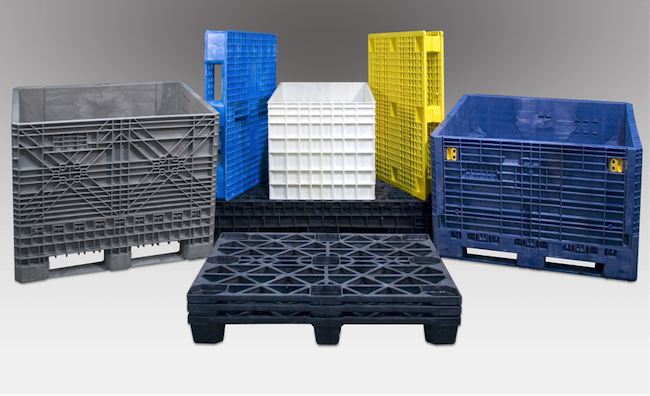Categories
- News (8)
- Industrial news (8)
Plastic pallets valued for export: no ISPM-15 worries, lightweight, and more.

Are you considering plastic export pallets? One important benefit of plastic pallets for export is that they do not require special treatments as would solid wood pallets.
Taking a step back, in the course of global trade flows, pests can quickly reach every continent and harm the local agriculture and forests. With this in mind, ISPM 15 (International Standards for Phytosanitary Measures) guidelines have been created to regulate wood packaging material in international trade to prevent the spread of pests. These guidelines require measures such as heat treatment or fumigation prior to eliminate pests and to protect the wood against new infections.
Non-solid timber pallets such as those constructed from presswood, paper, metal or plastic are exempt from treatment requirements. Plastic pallets have been in the marketplace since the 1960s, however, it has only been in recent years that their popularity for export usage has really escalated.
It should be cautioned, however, that there is more to pallet selection than the price tag. The cheapest pallets available might not be the best fit for your application.
Increasingly, his role has moved towards reviewing the requirements of the customer’s unit load application from the time the empty pallets are unloaded from the supplier, through to palletization, shipment and then handling and recycling abroad. The goal is to match the best value pallet that will guarantee a successful shipment. Getting the cheapest plastic pallet might be a costly mistake if it results in damaged products or problematic business relationships, he cautioned.
One important aspect of pallet selection is conforming to the standard pallet footprint size of the country of destination. For example, while the standard size in North America is 48×40”, we see 1165x1165mm in Australia, 1200x800mm in Europe and 1100x1100mm as well as 1200x1000mm in Asia as common sizes.
“For sure there was a shift to plastic,” one plastic pallet sales person commented when asked about how the introduction of ISPM 15 has impacted the export pallet market. “If now a company can provide a plastic pallet that can compete against the price of wood, why should a customer not decide for the plastic pallet? He does not require anymore the bureaucratic and labeling expenses for export wood pallets. And he can benefit from the lower weight, important for air freight, and better handling of plastic pallets.”
What’s to like about plastic export pallets?
Today, plastic pallets are used for a great many applications in addition to export. With technological improvements, plastic pallets are designed to give great performance at a lighter weight and with better durability.
Typical markets using plastic pallets include: